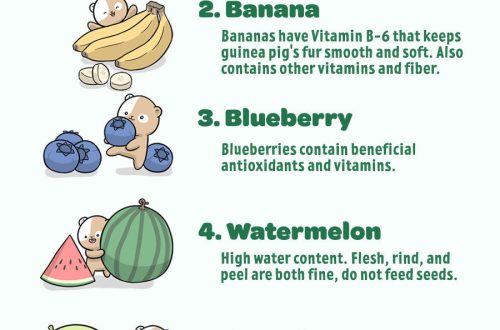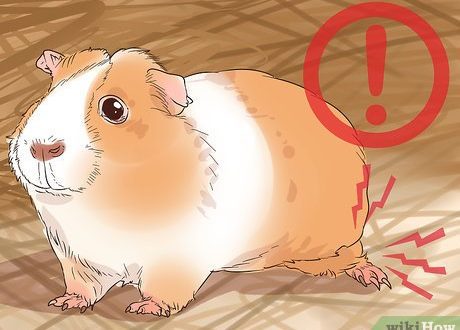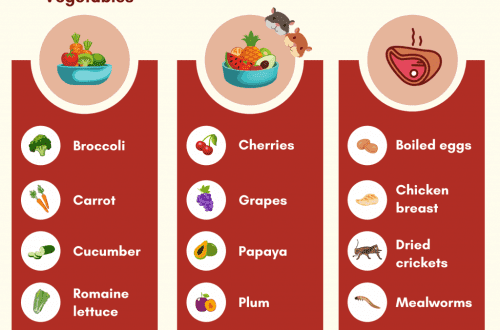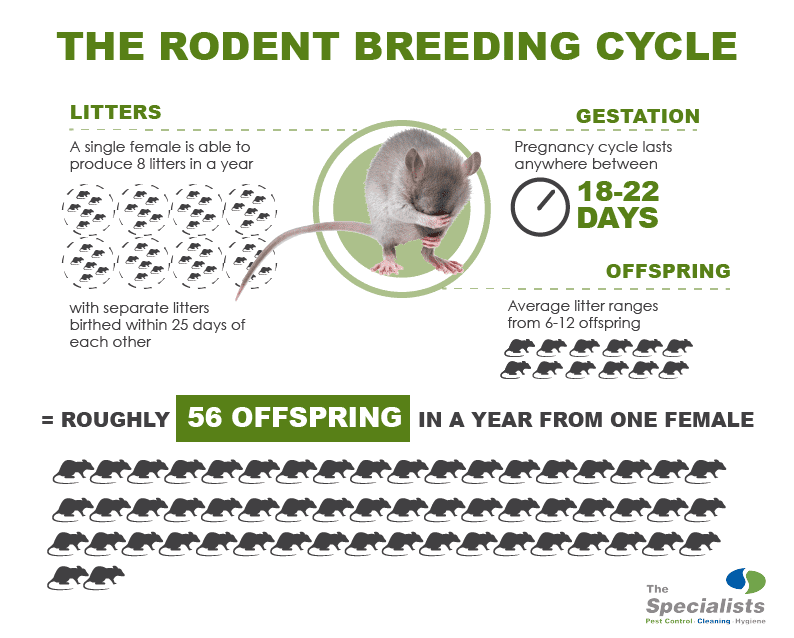
How long does pregnancy last in rats, how to understand that a rodent bears offspring
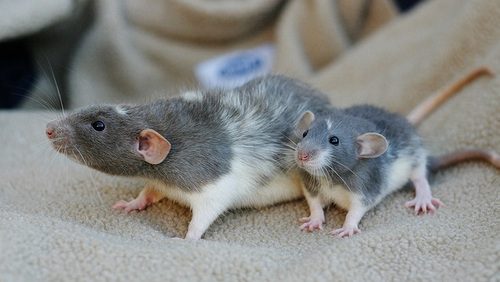
Decorative rats have become very popular pets. Their care is minimal, rodents do not require walking, and in terms of intelligence and emotional communication with humans, these animals surpass many common four-legged pets. Often people give birth to animals of different sexes for breeding these intelligent rodents. An unplanned pregnancy can also occur in ornamental rats with careless joint keeping of animals of different sexes, often through the fault of the seller, who incorrectly determined the sex of the pets or sold the rat in an “interesting position”.
Caring for a pregnant rat and the problems of selling rat offspring fall on the shoulders of rodent owners. It is necessary to take into account the possibility of pathological births in the female and the likelihood that not all pet stores are ready to buy your rodent cubs, and the owners of snakes and birds of prey will buy most of the pups to feed their pets. You need to be very careful about the process of pregnancy and childbirth in your decorative rat.
Contents
How to tell if a rat is pregnant
Inexperienced rodent lovers are not always able to determine that a rat is pregnant right up to birth. There are quite clear signs of a female’s pregnancy, allowing you to find out about the early replenishment and properly prepare for the upcoming birth.
Changing the habitual behavior of the animal
A domestic rat can become less mobile, emotionally calmer or, on the contrary, too aggressive; closer to the time of birth, the animal begins to drive the male away from the nest, tries to hide from the owner, refuses to play, reluctantly allows itself to be touched, the animal sometimes sleeps only on its side. The behavior of some individuals does not change, the female remains cheerful and playful until the very birth.
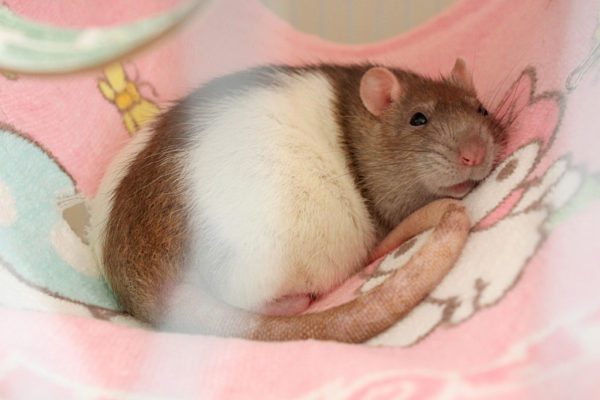
The absence of estrus is the most reliable sign of pregnancy
Estrus in decorative rats occurs once every 5 days and lasts about 12 hours, the animal arches its back strongly, throws its head back, lifts its tail and shakes its ears, the rodent’s vagina is ajar and slightly moist.
Weight gain
The female begins to recover intensively closer to the 3rd week of pregnancy, in some females the stomach becomes very voluminous. If the rat allows you to touch the abdomen, after 2 weeks you can feel several hard fruits the size of medium-sized beans, immediately before childbirth, active stirring of the abdomen is clearly observed.
Building a nest
Immediately before giving birth, a pregnant rat begins to actively build a nest for her cubs, for this she can gnaw off pieces of fabric from a hammock, sofa upholstery, curtains, paper. During this period, the female can be very aggressive towards relatives and owners.
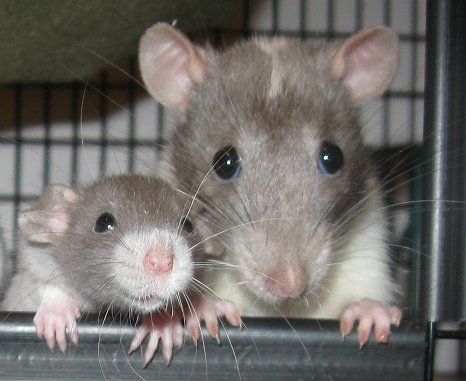
Eating and refusing food
During pregnancy, the female tries to eat high-calorie food to bear numerous offspring, sometimes she does not pay attention to her previously favorite treats, the day before giving birth, the rat may refuse to eat at all.
Aggression before childbirth
At the end of pregnancy, the female strongly protects the nest from the male, who can eat newborn rats. At this time, you can not touch the animal, examine the nesting house, change the litter. The reaction of the female will be very aggressive, she guards her babies and is able to bite the owner hard.
Carefully observe your domestic rat, during pregnancy, try not to disturb the animal once again, stress can provoke miscarriage and death, both of the fetus and the pregnant female.
What does a pregnant rat look like?
Pregnancy in domestic rats is characterized by a noticeable change in the shape of the body of the animal. The animal is actively gaining weight, there is a noticeable increase in volume in the abdomen and ribs closer to the 3rd week of pregnancy. The body of the rat takes on a pear shape: a small muzzle with a pointed nose and a large expanding abdomen. The rounded convex belly is easy enough to notice when the animal stands on its hind legs.
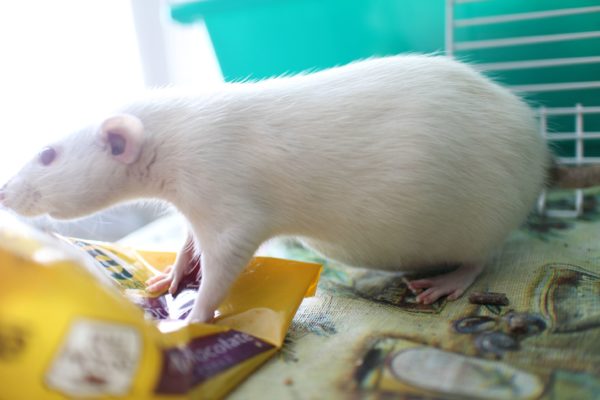
How long does pregnancy last in rats
A domestic rat can easily become pregnant at the age of 1,5 months, and the male is capable of mating from 5 weeks, and he can fertilize any female: both sister and mother. When keeping rodents for breeding, males are deposited in a separate cage at the age of 35 days. The best age for a primiparous female is 6-8 months; mating before the physiological maturation of a female is not recommended.
The gestation period in rats is about 3 weeks, the duration of this period directly depends on the number of fetuses in the female’s stomach.
With a small litter, the female walks pregnant for about 19-20 days, multiple pregnancy of rats can last 25-26 days.
Within a day after giving birth, the female can become pregnant again, which can have a detrimental effect on her health; when keeping animals for breeding, it is recommended to give the female 2-3 months to recover.
Often the animal eats newborn rats in order to raise the first cubs, with insufficient nutrition, both litters may die.
How long does a rat carry rats
On average, the offspring of a domestic rat is from 8 to 15 pups., sometimes the number of cubs in a litter reaches 22 (!) individuals. Rarely enough, an infertile pregnancy is also encountered, in which the female gives birth to only 2-3 rats.
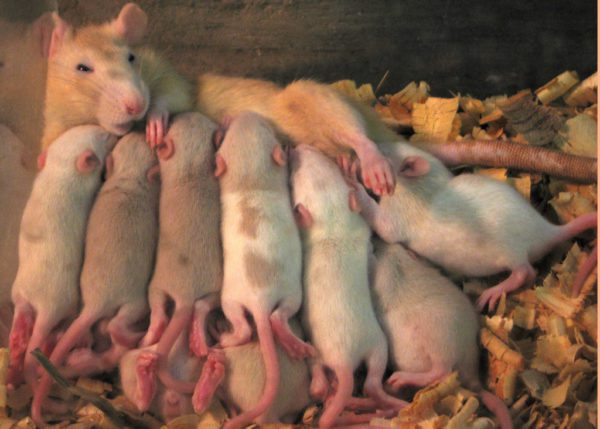
How many nipples does a rat have
The female rodent has 12 nipples, so most often the litter consists of 12 cubs. With good nutrition, the animal calmly feeds up to 22 rat pups. The female divides the newborns into two groups and alternates feeding the cubs.
How to care for a pregnant rat
During pregnancy, the expectant mother needs special care and enhanced feeding so that she has the strength to give birth and feed her noisy numerous offspring. The owner needs to create comfortable conditions for the female “in an interesting position”:
- it is better to remove a pregnant rat from a male or other females in a spacious cage, it is advisable to remove all platforms, stairs and toys from the new house;
- place a voluminous nesting house in the new rodent dwelling with the expectation that the pet can give birth to up to 22 rat pups;
- bedding is best made from soft hay or straw;
- to arrange a nest, put pieces of napkins or paper towels in a cage; it is undesirable to use a fabric with long threads so that newborn rat pups do not get tangled in them and break their paws;
- the pet must be provided with high-calorie nutrition and a sufficient amount of clean drinking water;
- it is not recommended to frequently change the litter, move the cage to another place, touch the animal, inspect the nesting house and make sharp sounds near the pregnant female. Stress can cause miscarriage or the female eating newborn rats.
What to feed a pregnant rat
A pregnant female during an important period of bearing offspring should be provided with high-calorie nutrition with an increased content of protein, vitamins and microelements. With poor feeding, the animal eats its newborn rats.
In the first two weeks of pregnancy, the diet of the expectant mother should contain poultry and fish, apples, cartilage of chicken bones, willow twigs, it is desirable to reduce the consumption of broccoli, liver and wheat and oat sprouts. Not recommended for use: onions, garlic, bell peppers and tomatoes.
In the last week of pregnancy, it is worth increasing the caloric content of the diet to prepare the body of a pregnant rat for the upcoming birth and feeding the cubs. During this period, it is worth feeding the rodent with cottage cheese, poultry and fish, apples, nettles, cartilage of chicken bones, baby food from jars, cow’s milk can be introduced into the diet, it is desirable to limit the use of chicken egg yolks and cucumbers. The following are subject to exclusion from use: onions, garlic, fresh and dried grapes.
With decent feeding and a good level of maintenance, pregnancy in ornamental rats proceeds quite easily, but you should not exclude the possibility of a pathological course of this process in your pet. In the event of purulent or bloody discharge from the vagina of a pregnant female, it is urgent to deliver the animal to a veterinary clinic. Depending on the general condition of the female and her fetuses, the specialist will decide whether to continue the pregnancy or perform an emergency caesarean section to save the life of the female.
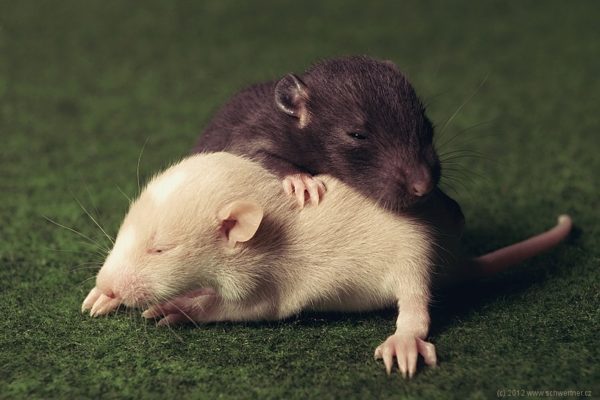
Pregnancy in ornamental rats is a very serious period of life, a loving owner for this time should provide the female with tasty and healthy food, comfortable living conditions and increased care. In most cases, the pregnancy of pets ends with a long-awaited successful birth and a wonderful addition to the family.
Pregnancy in Rats: Timing, Detection and Duration
4.5 (90%) 280 votes



